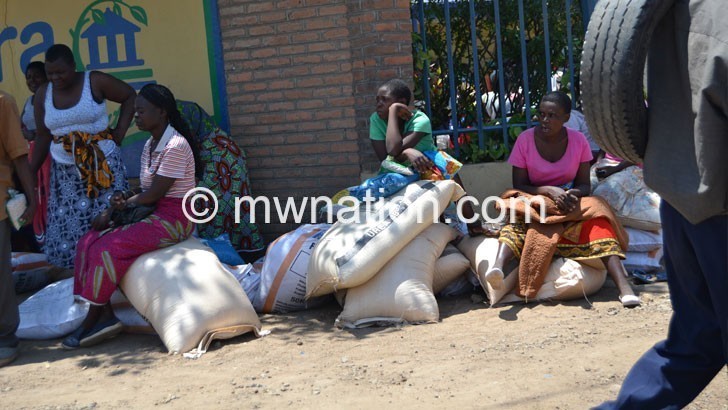Agriculture investment under scrutiny
Despite consistent allocation of about 10 percent of the national budget to agriculture, statistics on the ground show that the sector is not growing, raising concerns on the efficiency in allocating public resources.
The Agriculture Sector Performance Report (ASPR) for July 2017 to June 2018 shows that the sector’s growth in 2017/2018 was estimated at 0.1 percent from 6.3 percent achieved in the 2016/17 period while its share of the gross domestic product (GDP) has averaged about three percent in the last decade.

The report attributes the decline to government funding said to be skewed towards two programmes of National Agriculture Investment Plan (Naip) out of the 16.
In the 2017/18 National Budget, half the allocation to agriculture went to Farm Input Subsidy Programme (Fisp) and the purchase of relief maize.
Observes the report: “Production and productivity, market, value addition, trade and access to finance were the least funded programmes. Development partners have concentrated on production and productivity.
“Further analysis of intervention areas shows a more skewed funding allocation to few intervention areas within the programmes by all players. There is need to balance up the expenditures across the Naip programmes and intervention areas for effective delivery of Naip.”
Besides misallocation of resources, the report observes that the agriculture GDP has been characterised by high volatility with back-to-back fluctuations largely influenced by weather patterns.
The report observes a decline in agriculture share of GDP growth rates in 2015 and 2016 of -0.1 and -0.2 percent, respectively, followed devastating floods, a fall armyworm attack and dry spells experienced during these years.
In contrast, significant agricultural growth of approximately 6.3 percent achieved in 2017 was preceded by a favourable weather pattern in the country, while the 2017/18 season was characterised by an unfavourable weather pattern and fall armyworm attacks which saw the sector GDP dropping to 0.1 percent.
According to the Malawi Vulnerability Assessment Committee (Mvac), the number of people facing hunger has almost tripled from 1 043 000 last year to 3 306 405 million in 2018/19.
The report has since recommended the need to balance up the expenditures across the Naip programmes and intervention areas for effective delivery of Naip guided by the proposed program annual budgets.
In March, a study by Oxfam found that blended financing comprising public and private donor support in agricultural development is hampered by poor quality, lack of consistency and accountability.
The report titled Accountability Deficit Finance Blending in Agriculture assessed the effectiveness of private finance blending in ensuring that small-scale farmers are not left behind.
During the 2017/18 financial year, Ministry of Agriculture, Irrigation and Water Development allocation was reduced from K199.7 billion in 2016/17 financial year to K136.8 billion.
Malawi commits over 10 percent of its budget to the agriculture sector in line with the Comprehensive Africa Agriculture Development Programme (Caadp) Malabo target.
Reacting to findings in the report, agriculture expert Tamani Nkhono-Mvula observed that there have been challenges to effectively allocate the resources to achieve high agricultural growth and transformation.
He said there is urgent need for the country to gradually shift its resources from rain-fed maize production to increased irrigation infrastructure development while adopting a more market-based approach.
Said Nkhono-Mvula: “Investment into Fisp has been a risky gamble that we have been taking as all of what goes into Fisp goes towards a solely rain-fed programme. In case of drought, then all the money goes to waste and the very recipients of the Fisp need food aid.”
In the current financial year, government allocated K151 billion to agriculture out of which K42 billion went to Fisp which saw an increase in the number of beneficiaries from 900 000 to 1.5 million.
But even when government spent between K35 billion and K43 billion annually on Fisp over the past five years, millions of Malawians have continued to face food shortages.
Agriculture is the backbone of the country’s economy and vital for the livelihoods of most Malawians, including national and household food security.
The sector generates around a third of the country’s GDP, accounts for 65 percent of employment and makes around 60 percent of export earnings.
Since its inception in 2005, Malawi has invested about K398.6 billion in Fisp, an equivalent of a third of the current K1.4 trillion national budget, raising calls from opposition parties and other commentators, including Economics Association of Malawi (Ecama), for government to abolish the programme because it is not achieving its intended purpose.
Critics of the subsidy programme have also suggested increased investment in irrigation as a better alternative towards achieving household and national food security goals.





